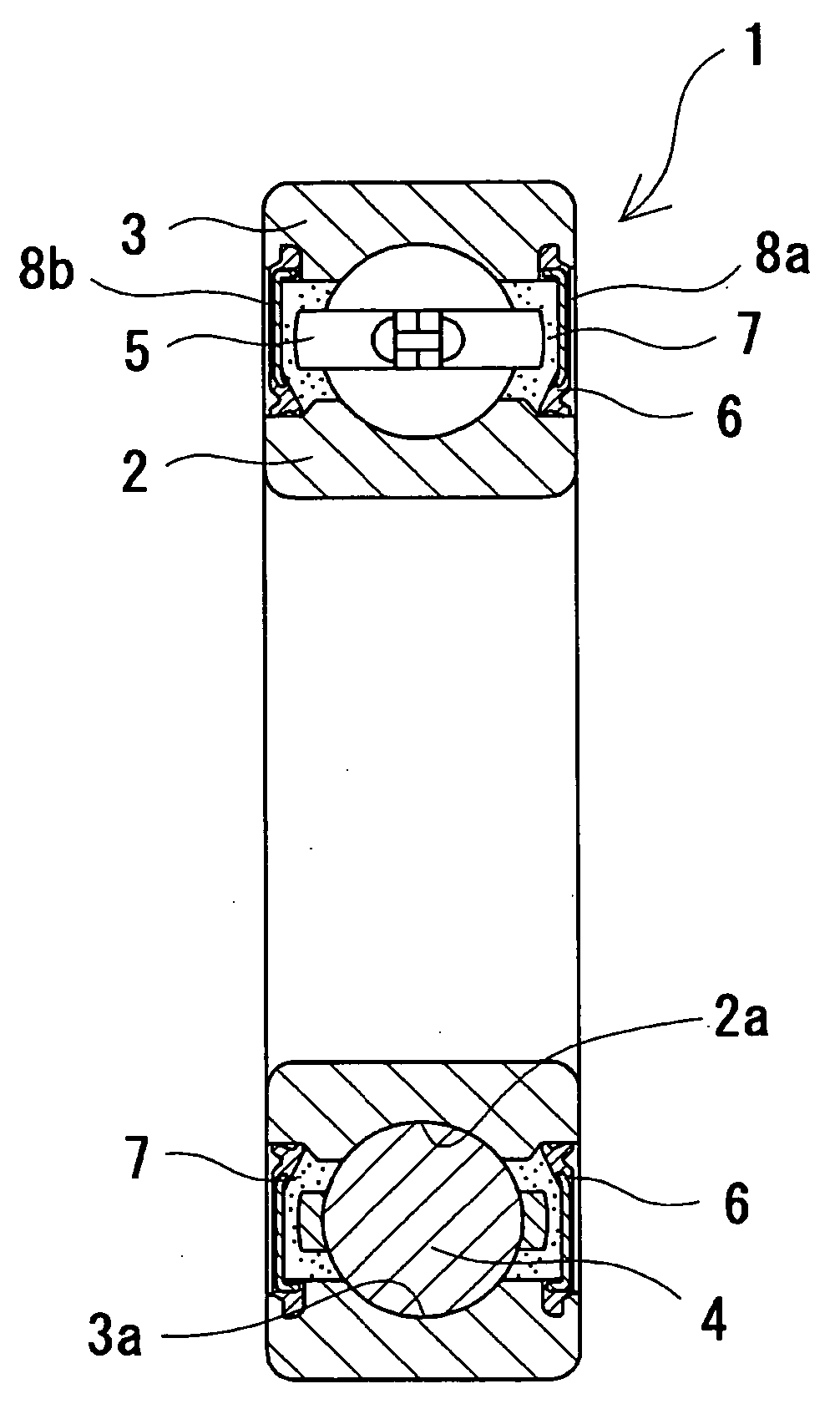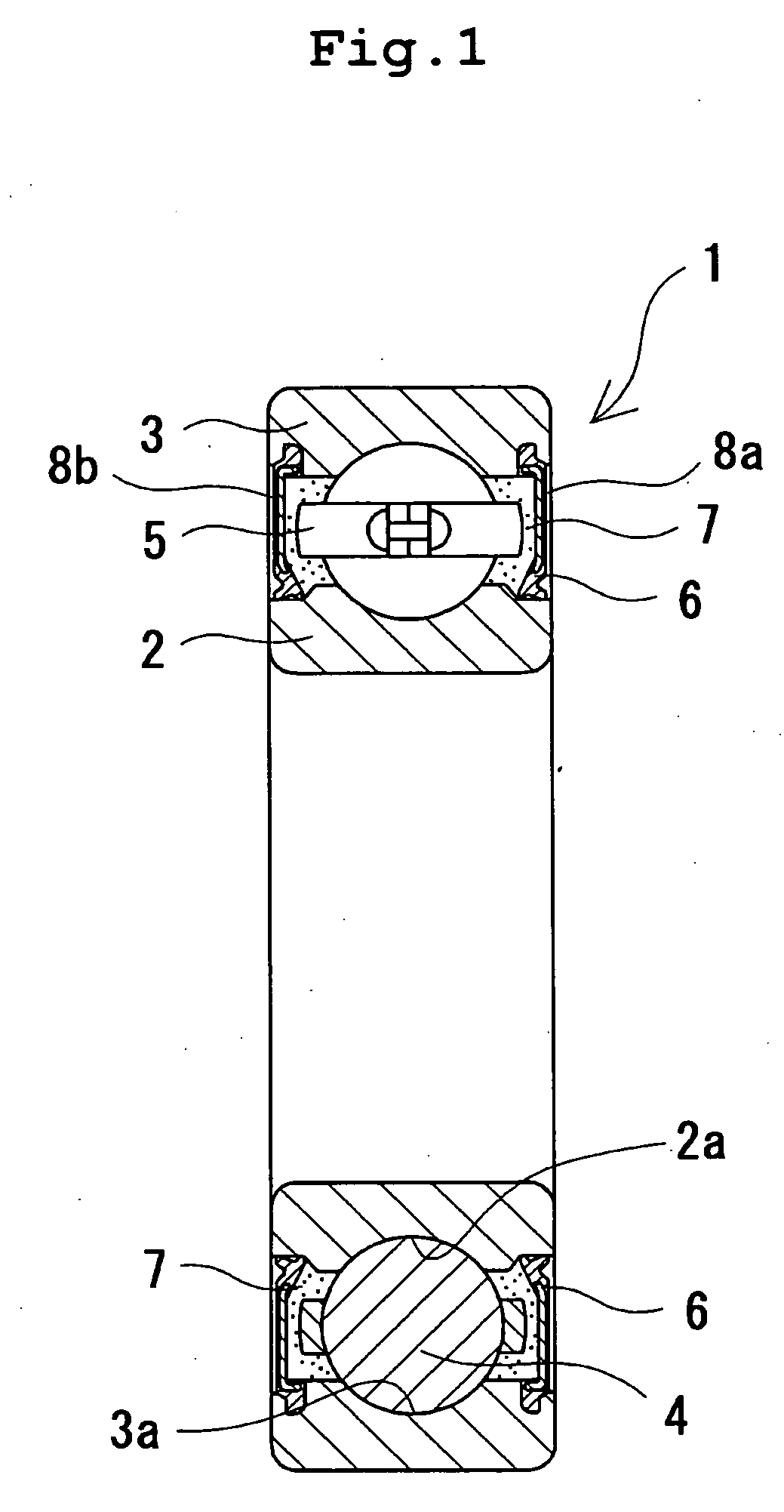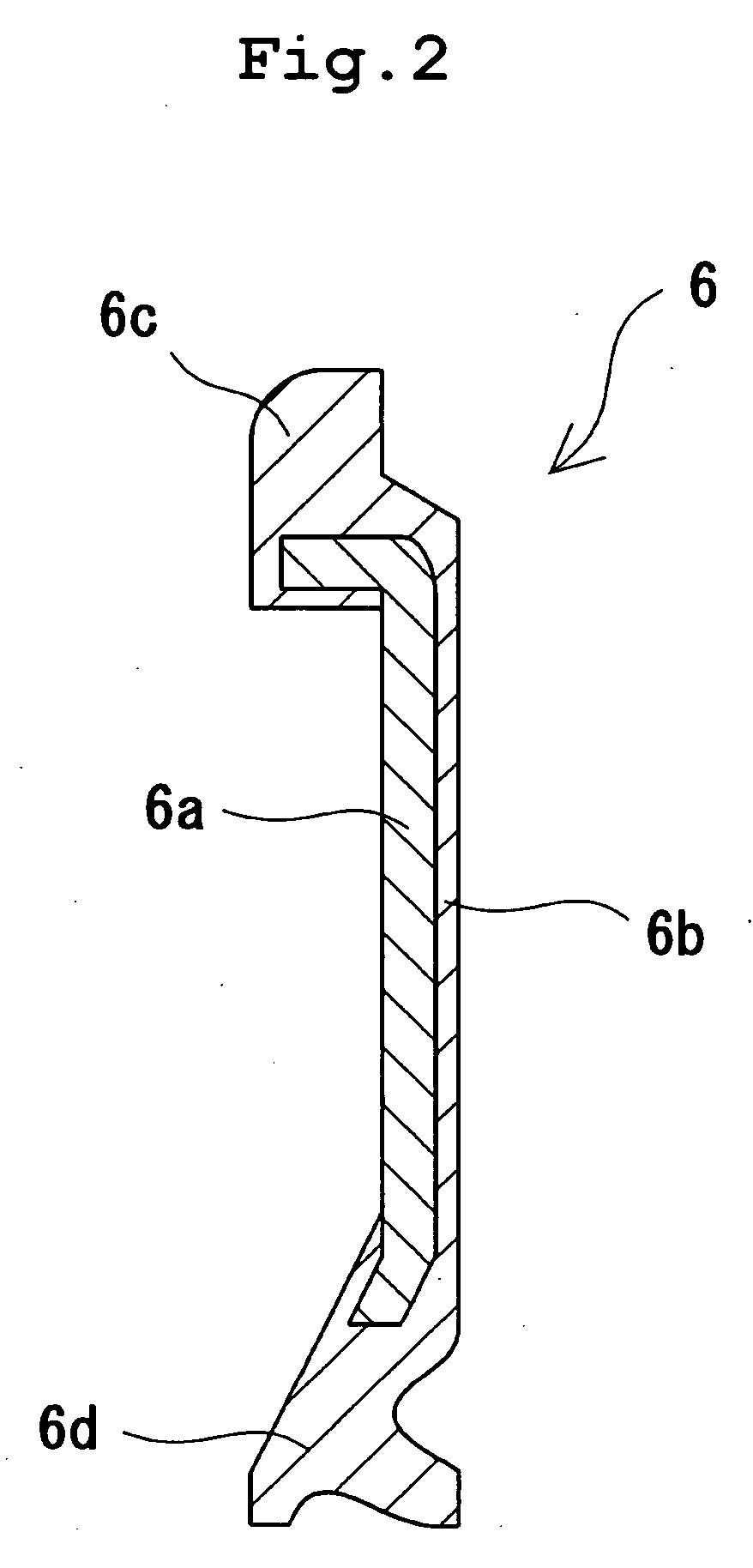Rolling bearing for use in vehicle
a technology for rolling bearings and vehicles, applied in the direction of bearings, shafts and bearings, bearings, etc., can solve the problems of high price of fluorine grease, difficult to prevent the above-described tertiary copolymer and the binary copolymer from deteriorating with age, and achieve the effect of improving the durability of rolling bearings and being durable for a long tim
- Summary
- Abstract
- Description
- Claims
- Application Information
AI Technical Summary
Benefits of technology
Problems solved by technology
Method used
Image
Examples
example 1
[0130] An unvulcanized rubber composition of the mixing example 1 was molded onto the core of an iron plate to obtain a non-contact-type rubber seal (see FIG. 2) for a bearing 6204 (inner diameter: 20 mm, outer diameter: 47 mm, width: 14 mm). The rubber seal was incorporated in a specimen bearing washed cleanly with petroleum benzine. A mixture of the fluorine grease and the urea compound-containing grease was enclosed inside the bearing. The mixture occupied 38 volume % of the entire space inside the bearing. The rolling bearing was evaluated in a high-temperature durability test. Table 6 shows results.
[0131] In the high-temperature durability test 1, the rolling bearing was rotated at a radial load of 67N, a thrust load of 67N, 10000 rpm, and an atmospheric temperature of 220° C. The period of time required for the motor to stop owing to an overload was measured. The test time was 1000 hours at maximum.
example 2
[0132] A non-contact-type rubber seal obtained in a manner similar to that used in the example 1 was incorporated in a specimen bearing washed cleanly with petroleum benzine. The urea compound-containing grease 2 was enclosed inside the bearing, and occupied 38 volume % of the entire space inside the bearing. The rolling bearing was evaluated in a high-temperature durability test 2. Table 6 shows results.
[0133] In the high-temperature durability test 2, the rolling bearing was rotated at a radial load of 67N, a thrust load of 67N, 10000 rpm, and an atmospheric temperature of 180° C. The period of time required for the motor to stop owing to an overload was measured. The test time was 500 hours at maximum.
example 3
[0134] A non-contact-type rubber seal obtained in a manner similar to that used in the example 1 was incorporated in a specimen bearing washed cleanly with petroleum benzine. Mixed grease was sealed inside the bearing. The mixed grease occupied 38% of the volume of the entire space inside the bearing. The rolling bearing was evaluated in a high-temperature durability test 3. Table 7 shows test results.
[0135] In the high-temperature durability test 3, the rolling bearing 1 disposed at the side of the pulley 27 of the alternator shown in FIG. 3 was used. The alternator was operated in the following conditions: The load applied to the pulley 27: 3.2 kN (load applied to bearing 1 was about 4.5 kN), the number of rotations of the rolling bearing: 18000 rpm, and temperature: room temperature. The period of time required for the load applied to a motor which drove the alternator to rise owing to an excessive rotational torque caused by deterioration of the grease sealed in the bearing 1 w...
PUM
 Login to View More
Login to View More Abstract
Description
Claims
Application Information
 Login to View More
Login to View More - R&D
- Intellectual Property
- Life Sciences
- Materials
- Tech Scout
- Unparalleled Data Quality
- Higher Quality Content
- 60% Fewer Hallucinations
Browse by: Latest US Patents, China's latest patents, Technical Efficacy Thesaurus, Application Domain, Technology Topic, Popular Technical Reports.
© 2025 PatSnap. All rights reserved.Legal|Privacy policy|Modern Slavery Act Transparency Statement|Sitemap|About US| Contact US: help@patsnap.com



